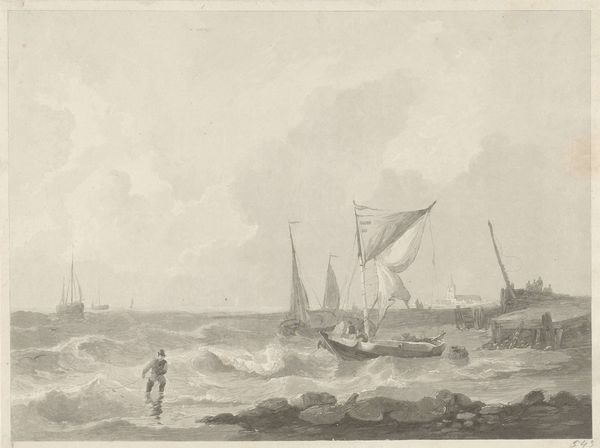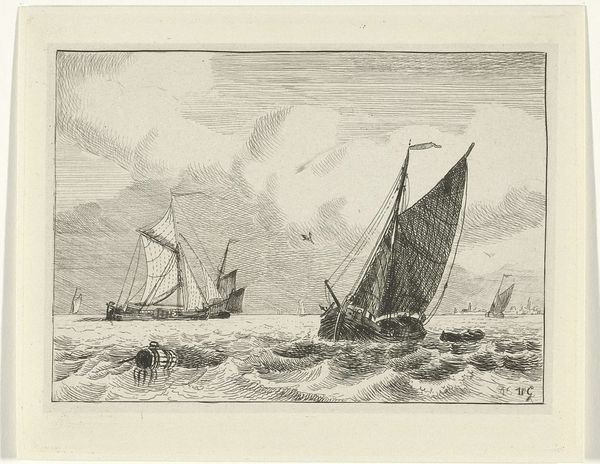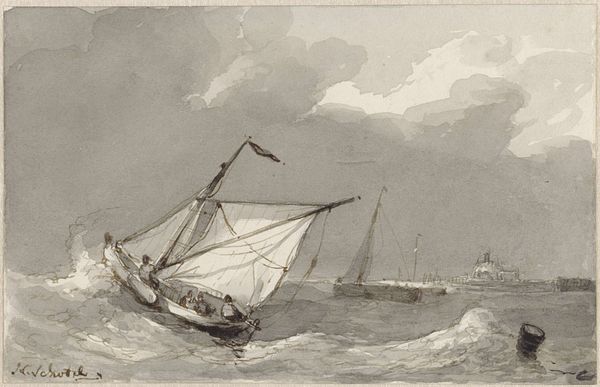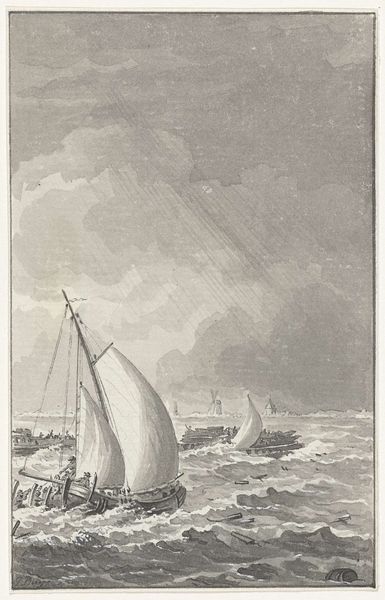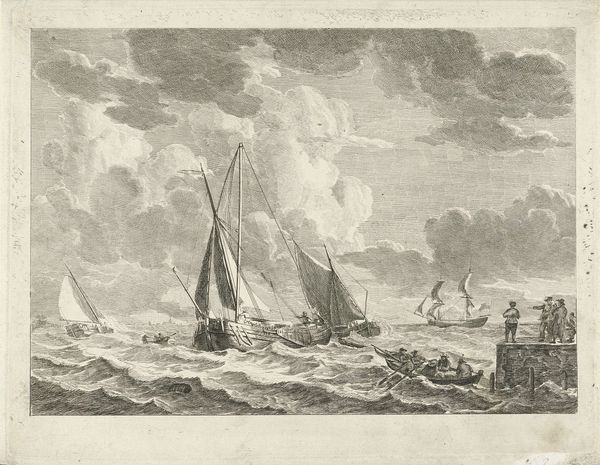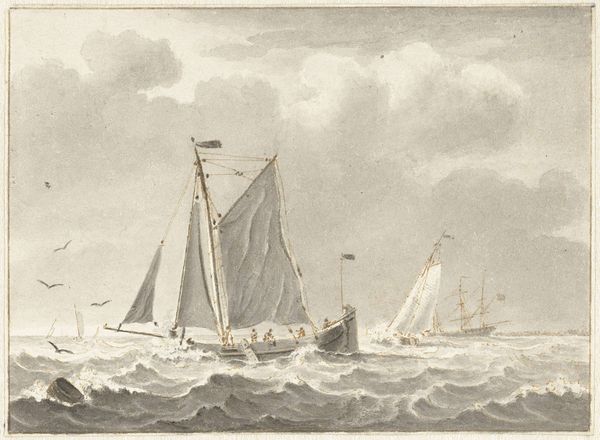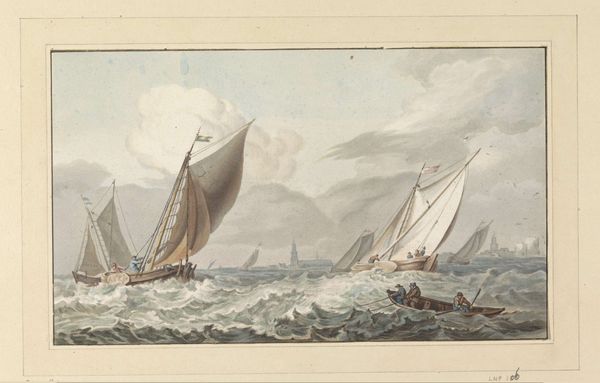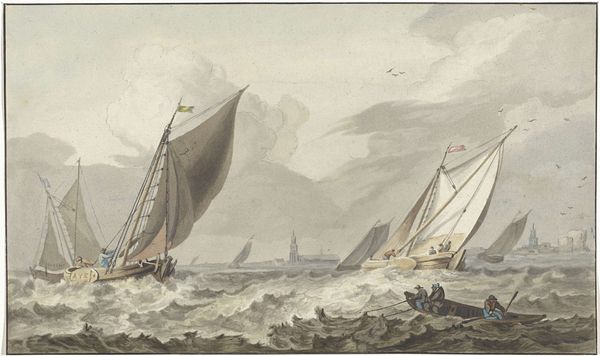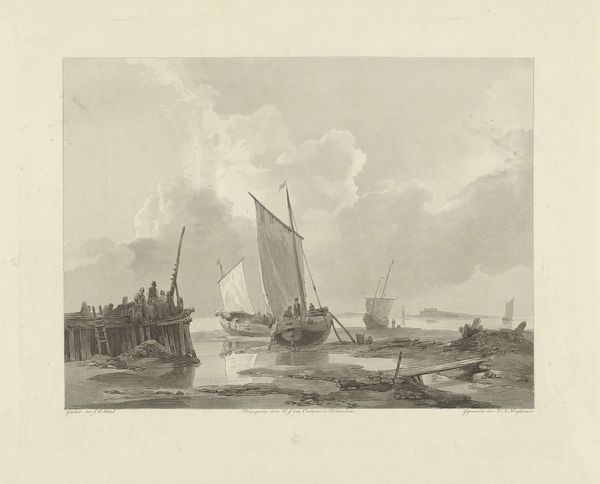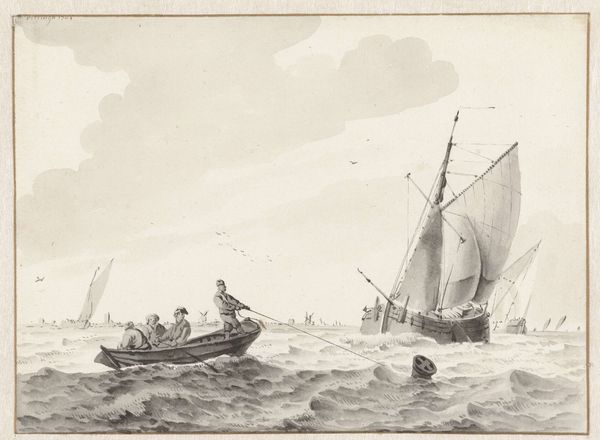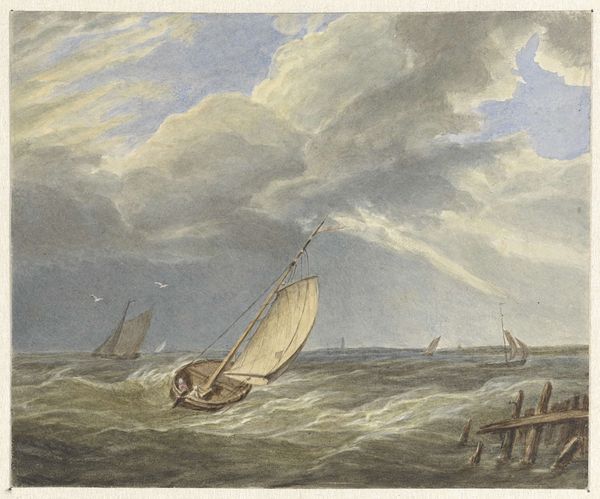
Schip onder zeil op de Maas, in de verte de dorpen Oud en Nieuw Beijerland 1758 - 1815
0:00
0:00
drawing, paper, ink
#
drawing
#
dutch-golden-age
#
landscape
#
river
#
paper
#
ink
#
cityscape
#
genre-painting
#
realism
Dimensions: height 280 mm, width 399 mm, height 239 mm, width 325 mm
Copyright: Rijks Museum: Open Domain
Curator: Ah, this piece evokes such a breezy feeling, don’t you think? It is titled "Ship under sail on the Maas, in the distance the villages Oud and Nieuw Beijerland" by Nicolaas Wicart, dating back to sometime between 1758 and 1815. It's executed in ink on paper. Editor: The tonality immediately struck me. It’s almost monochromatic—variations in grey that create quite an ethereal atmosphere. See how the composition is structured. The boats cut through the waves, directing your gaze toward the horizon where the faint silhouette of the village resides. Curator: Ethereal is the perfect word. I always feel a kind of wistful longing when I see scenes like this. You can almost smell the sea salt, can't you? But yes, you’re spot-on. It's about directing your vision from the turbulent foreground toward the serene distance, perhaps suggesting a journey or escape. It's incredibly calming despite the implied motion of the boats. Editor: It’s a careful study in contrasts: the choppy waves below, those towering, cumulus clouds above. And, notably, the interplay of light and shadow lends the scene depth and dimension, bringing a sense of drama, but softened through muted tones. Notice, as well, that Wicart focuses on maritime motifs popular during the Dutch Golden Age—a fascination with the sea and its vessels as metaphors for trade, exploration, and national identity. Curator: Absolutely! The Golden Age had a particular fascination with seascapes. These images served as records, celebrating both nature's force and man’s ability to navigate it. Also, let's acknowledge how realistically, in spite of working on paper, he captured those details! The texture of the waves feels authentic. It's as if he stood there, observing this exact moment. Editor: Precisely. While rendered monochromatically, Wicart pays scrupulous attention to capturing realistic detail—note the rigging on the ships, the play of light on the sails, and the textural differences in the water. These are elements that highlight this as more than just representation. There is also realism but a sophisticated application of art principles to enhance meaning. Curator: You know, looking at this, I feel connected to all those who looked to the sea with anticipation or apprehension, maybe dreaming about the treasures of a far-off land or worrying about whether their loved ones might safely come home. A truly moving snapshot, this one! Editor: And what fascinates me most, even upon reflection, is how elegantly Wicart transformed ordinary maritime imagery into something haunting and emotionally resonant—a masterclass in observation, technique, and affective composition.
Comments
No comments
Be the first to comment and join the conversation on the ultimate creative platform.
